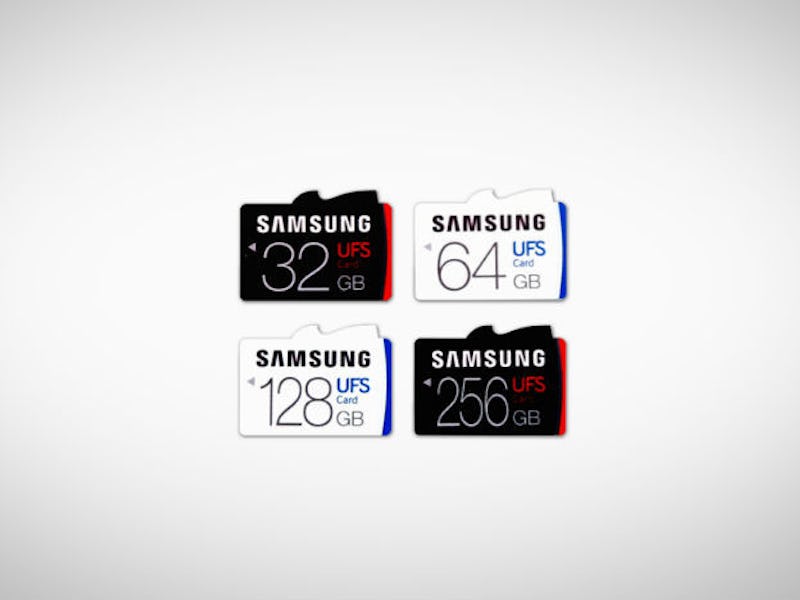Samsung UFS Cards Bring Ultra-Fast Laptop Speeds to Phones
The successor to the microSD card is here.

In the near future, smartphone memory speeds will match that of full-size laptops. On Thursday, Samsung announced a new removable card storage format called UFS (short for Universal Flash Storage). These tiny chips are blazing fast: UFS cards access data over five times faster than the microSD cards they’re designed to replace.
Increased speed is not just for bragging rights. These cards read data at around 530 megabytes per second, a speed comparable to the solid state drives found in laptops. That means using removable storage in a smartphone won’t result in performance loss: the system can read a 5GB high definition film in 10 seconds.
Smartphones are gradually taking on more tasks previously reserved for laptops. Virtual reality, a technology only just starting to mature, has found support on both full-scale PCs and ultra-slim Samsung Galaxys. All this extra demand for power needs components that are up to the task.
The faster speeds will help with newer Android features like Adoptable storage. This takes an inserted memory card, combines it with the storage built into the phone and turns it into a single storage point. Customers who buy a 16GB Android device can add in a 256GB card later on to reach 272GB.
The UFS technology in use here has already shown up embedded in Samsung devices as early as January 2015. The difference here is that the same super-fast storage solutions are now removable, allowing for upgrades in future. Initial UFS cards will come in a range of sizes, including 32GB, 64GB, 128GB, and 256GB.
“Our new 256GB UFS card will provide an ideal user experience for digitally-minded consumers and lead the industry in establishing the most competitive memory card solution,” said Jung-bae Lee, senior vice president at Samsung Electronics. “By launching our new high-capacity, high-performance UFS card line-up, we are changing the growth paradigm of the memory card market to prioritize performance and user convenience above all.”